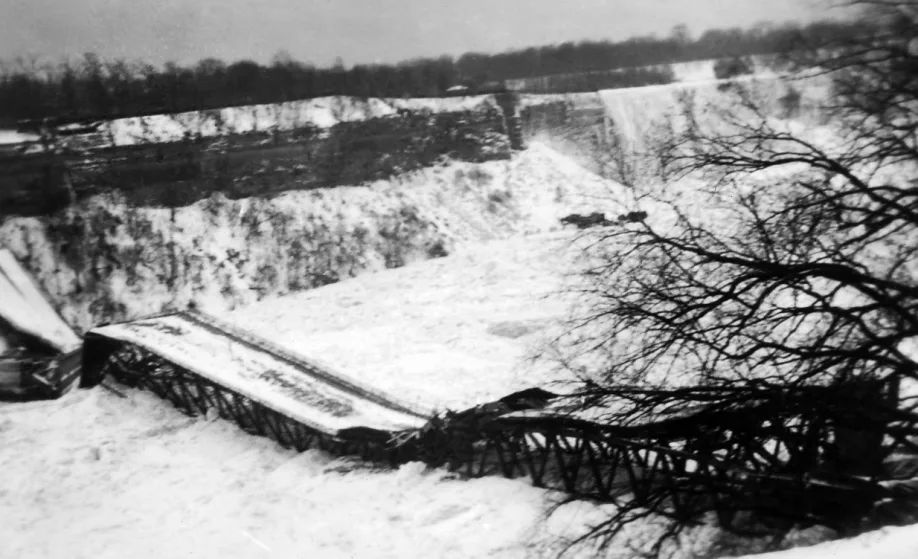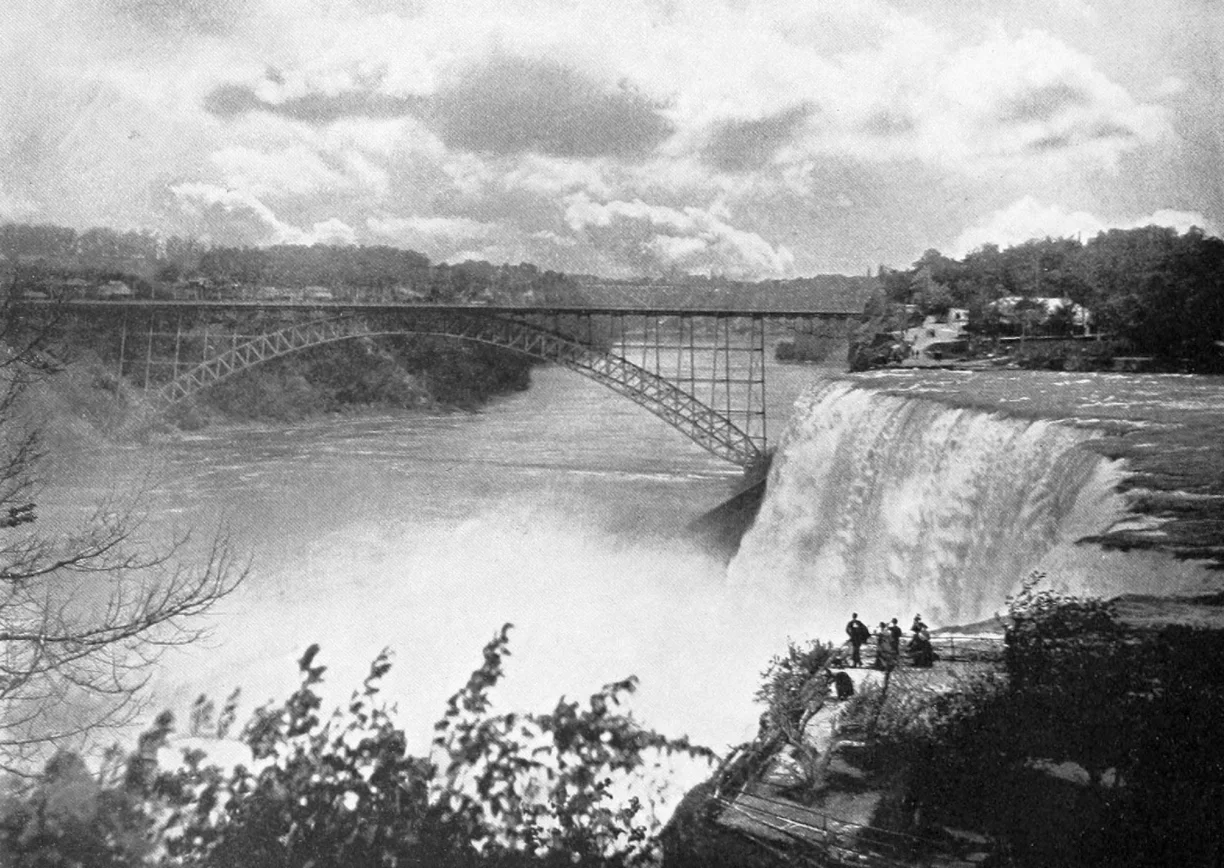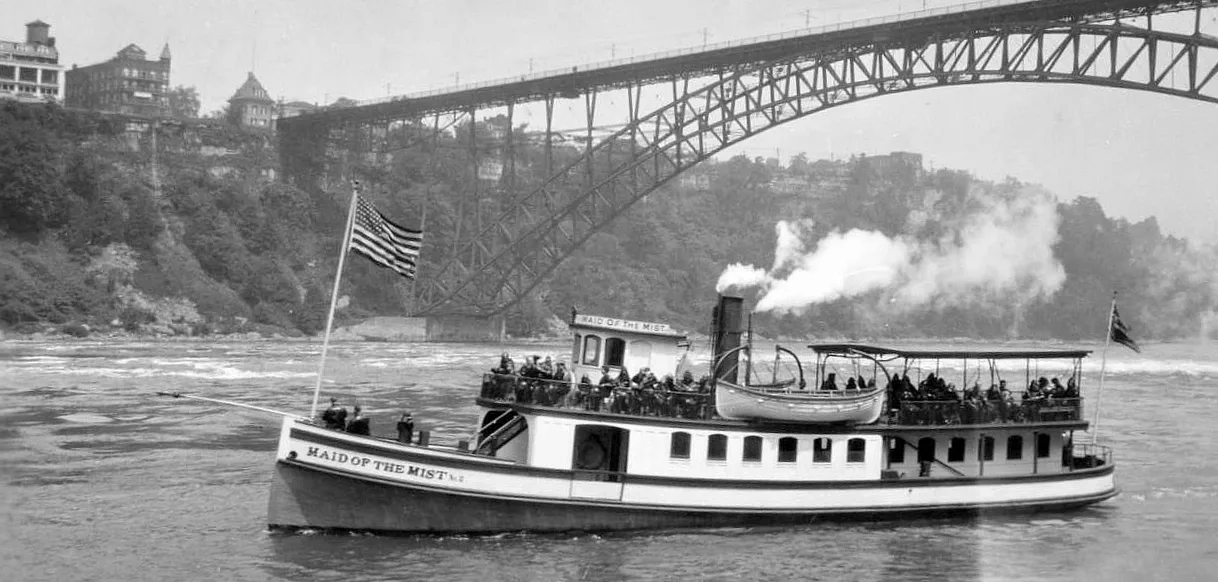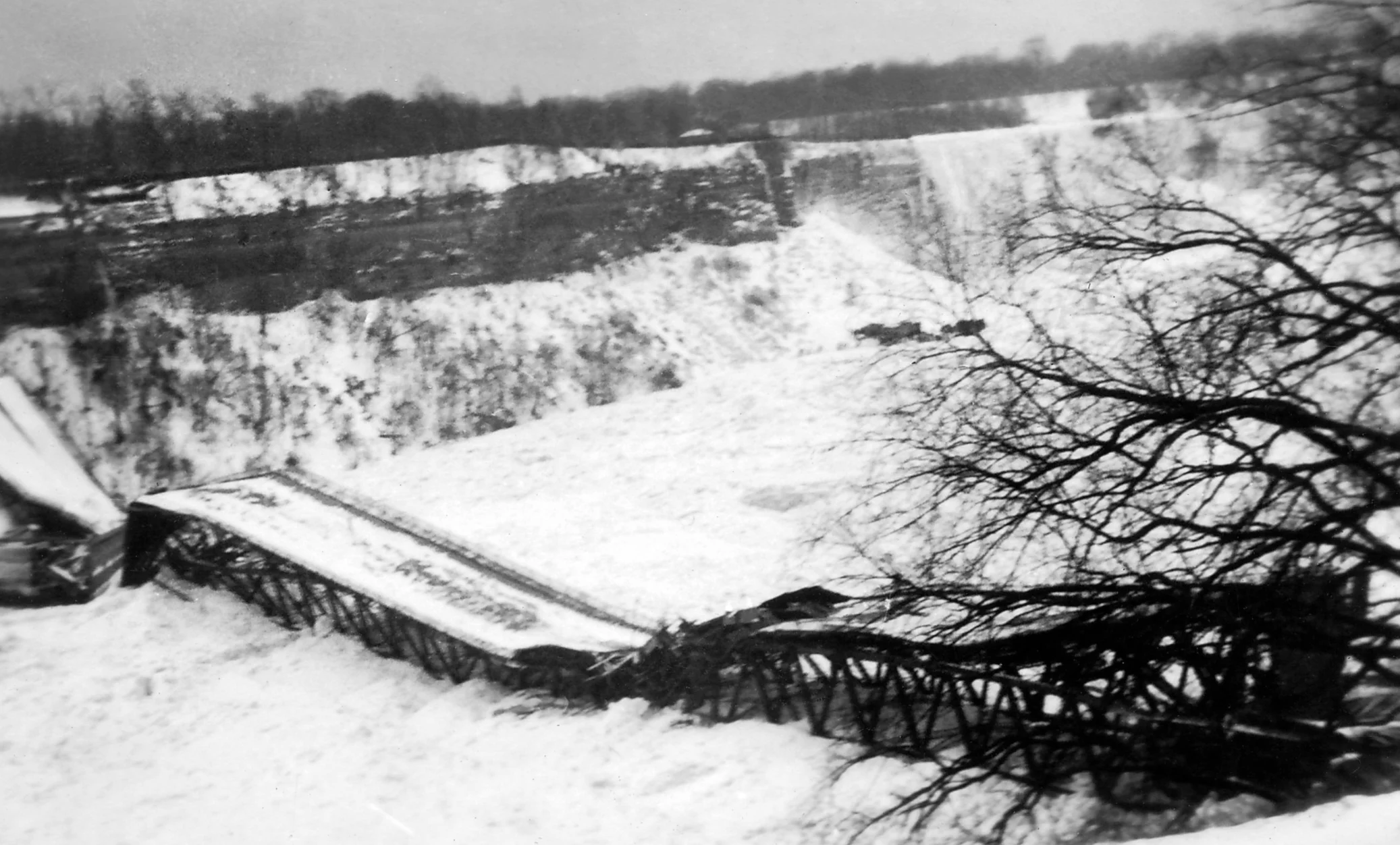
The Honeymoon Bridge in Niagara Falls lasted 40 years before it collapsed
The bridge had several close calls before ice stormed down the Niagara River and ultimately destroyed the structure.
This Day In Weather History is a daily podcast by Chris Mei from The Weather Network, featuring stories about people, communities and events and how weather impacted them.
--
It seems like the fate of the Upper Steel Arch Bridge was doomed since its completion in 1898. The structure, also known as the Honeymoon Bridge or Fallsview Bridge, was a bridge over the Niagara River that connected Niagara Falls, Ontario, Canada, with Niagara Falls, New York, United States.
At the time, it was said to be the greatest steel arch bridge in the world.
The bridge spanned 256 metres with trusses connecting the main span of the structure to each shoreline. The abutments extended to the base of the gorge.

Upper Steel Arch Bridge from Goat Island, 1900. Courtesy of [Wikipedia](https://en.wikipedia.org/wiki/Honeymoon_Bridge_(Niagara_Falls)
The bridge was wide enough for cars, carriages, and pedestrians.
At the beginning of 1899, threatening amounts of ice surrounded the abutments, which could have impacted the bridge's stability. As a result, a 7.3 metre tall stone wall was built around the abutments.
The bridge was also susceptible to heavy winds.
On Monday, June 8, 1925, people gathered on the bridge to watch the first illumination of the Falls (The Festival of Lights). The crowd quickly realized the bridge was heavily swaying so they swiftly walked off the structure. Because of this, there was lateral bracing added to the bridge.

Maid of the Mist beneath Honeymoon Bridge in 1920. Courtesy of Ian Sutton/Wikipedia/CC BY 2.0
Despite the reinforcement attempts, on January 23, 1938, a sudden wind storm on Lake Erie sent roaring ice down the river toward the bridge. Within 12 hours, the river was jammed with ice. The buildup put too much pressure on the bridge abutments and caused overall structural damage.
At this point, there was no saving the bridge.
Thousands of people visited the bridge to watch its inevitable collapse.

Collapsed bridge in Niagara River. View from the Canadian side. Courtesy of WikiPedant/Wikipedia/CC BY-SA 4.0
On Jan. 27, 1938, at 4:20 p.m., the span of the Honeymoon Bridge broke free and fell into the river in one piece.
For safer cleanup, the span was blown up into two pieces via dynamite.
Not long after, a replacement bridge was underway. It was completed in November 1941 and named the Rainbow Bridge.
To learn more about the Honeymoon Bridge's collapse, listen to today's episode of "This Day In Weather History."
Subscribe to 'This Day in Weather History': Apple Podcasts | Amazon Alexa | Google Assistant | Spotify | Google Podcasts | iHeartRadio | Overcast'
Thumbnail image: Collapsed bridge in Niagara River. View from the Canadian side. Courtesy of WikiPedant/Wikipedia/CC BY-SA 4.0









